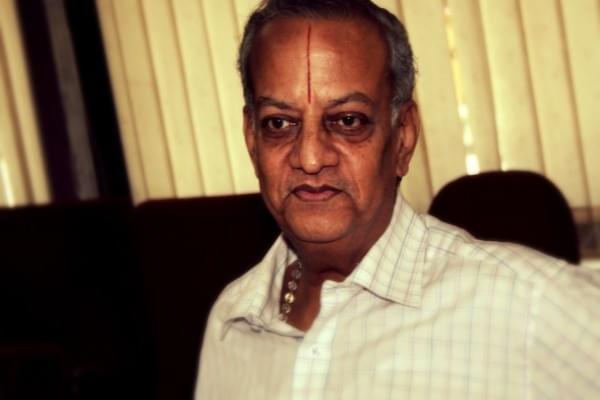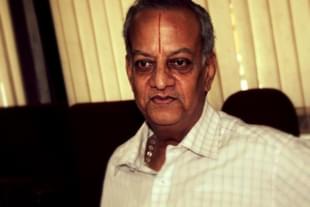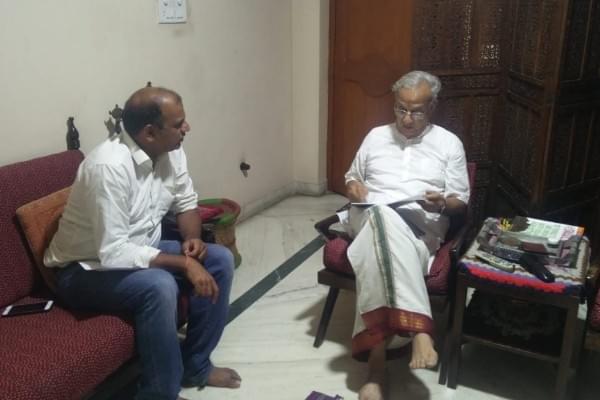Politics
Swarajya Interview With N Gopalaswami On Institutes Of Eminence
Swarajya Staff
Jul 15, 2018, 01:44 PM | Updated 01:44 PM IST
Save & read from anywhere!
Bookmark stories for easy access on any device or the Swarajya app.


One of the key initiatives as part of the Narendra Modi government’s plan to liberalise higher education has been to create “Institutes of Eminence” (IOE). Educational institutes that carry the IOE tag, based on select criteria, will essentially be India’s best shot at breaking into the top global lists of educational institutes worldwide. These institutes will enjoy academic and administrative autonomy like no institutes in India have ever before.
The man chosen to head the committee – “empowered expert committee” – that will be responsible for selecting these Institutes of Eminence is former chief election commissioner N Gopalaswami. Swarajya had the opportunity to speak to him and pick his brain about the various aspects of IOE, including the rationale behind pursuing a global projection of Indian institutes, criticisms levelled against the initiative, and why some deserving institutes didn’t make the cut. Excerpts:
The recent IOE selection announcement has created so much controversy, particularly about awarding the IOE tag to Jio Institute of Reliance Foundation. What is your take on it?
There are two extremes in terms of the people who will object to this decision. One will think whatever the government does is wrong. The other will genuinely have a different point of view. Whatever I say or do is not going to change the view of the first type. But we can have a meaningful discussion and agree or disagree with the other.
Perhaps, if they had named it differently, keeping the distinction between the existing and new institutes, this controversy would not have occurred. Say, if the nomenclature for the ‘greenfield’ category were to be something different, one that indicates future potential to become an Institute of Eminence and not directly compared with other established candidates. There should have been a differentiation in some form for the greenfield category.
At a policy level, the government has been moving in parallel on several fronts to liberalise higher education. For instance, the IIM Bill (the Indian Institutes of Management Bill, 2017) that gives greater autonomy to all IIMs is one such track. For all institutes with NAAC (National Assessment and Accreditation Council) score of over 3.5, a higher degree of autonomy is another track.
This Institute of Eminence selection is a different track that tries to facilitate certain institutes to break into the “Top 500” lists in global education rankings, for all three types of institutes, i.e., public institutions, existing (brownfield) private institutions, and new (greenfield) private institutions. This is definitely a well thought-out move by the government, and India will have more institutes featuring in the top 500 global rankings in the next 10 years because of this initiative.
Many critics are saying that this IOE tag is reminiscent of the old license raj era, where a select few are given access to ease of running a university, even if the reasons for awarding the tag are purely based on merit. Shouldn't the rules be uniformly relaxed for all?
Reform in education has been on the cards, including that of the UGC (University Grants Commission), and the government is taking several initiatives in this regard. The attempt is let go of control, even if that may invite resistance from certain interests.
I think the government may have also thought it can claim greater credit through an initiative such as creating Institutes of Eminence rather than pursue incremental reforms in UGC.

Picking public universities must have been comparatively harder, given there are so many fine institutions. How different were the selection criteria in selecting public and private institutions?
One of the key policy objectives was to select such institutes that have the potential to break into the top 500 global rankings. So, those institutes that were sectorally focused, such as all IIMs, TIFR, TISS, ISI, Agri Research Institutes, etc, which are otherwise of a high calibre, were not considered for the IOE tag.
Otherwise, the criteria for selection was similar for both public institutes and brownfield private institutes.
Global rankings give great importance to research. The government's justification for awarding the IOE tag appears to be to facilitate our institutes to break into these world rankings. But how justified is this approach? Shouldn't we be looking at various other factors that are also important in India's case, such as an institute's report card in imparting skills, getting its students employed and so on?
There may be many great institutes that need support; however, they don't make it to the top world rankings as they have very different criteria. Shouldn't we be focusing on rewarding the best rather than those who can feature in some global list?
This is the policy decision of the government, and the defined mandate of the EEC (empowered expert committee) was to identify those institutes that have the potential to get into the top 500 global ranks in the next 10 years. Also, some of the factors that you highlight as important are also part of the selection criteria in one way or another.
As mentioned before, several parallel initiatives are being taken by the government for reforming higher education, and this is one such move which, in my opinion, is a well thought-out initiative.
The EEC recommended 11 names – eight public universities and three private – but MHRD (the Ministry of Human Resource Development) has finalised only three public universities because private ones were also three in number. On an arbitrary ground, the five universities that deserved the tag won't get it. What do you think of this?
The EEC has submitted its report with a recommendation for eight public universities and three private institutes, which the government has accepted in toto. However, the MHRD has chosen only three each in the public and private sectors, probably to balance out between these two segments. The remaining five public institutes, i.e., IIT Madras, IIT Kharagpur, Jadhavpur University, Delhi University, and Anna University have been selected by the EEC and I’m sure they will get their IOE tag in due course.
Several prominent institutes such as JNU (Jawaharlal Nehru University) have not received the IOE tag. Why?
Many well-regarded institutes like the JNU were not considered because their academic focus is not comprehensive.
The criteria for selection of greenfield institutes is fairly simple – land availability, core team in place, funding ready, and a strategic vision. Of the 11 applications that you received, why was only one applicant selected? Did none of the other 10 meet these simple criteria?
We have carefully evaluated all the greenfield applications, with the sole criteria – do they have the required resources, land, team, funding? – to get into the global rankings of 500 institutes. You will be surprised to know the extent of the lack of resources. One of the applicant’s land is under litigation for over seven years, another one had indicated minuscule land size for the proposed institute, many did not have the core team in place, and a few of them had a narrow focus – for e.g., the focus could be limited to design, urbanisation, public health – which will not be eligible for global rankings. So, based on our careful evaluation, only one application had the requisite resources to convince us that it deserves the IOE tag.
Also, the government has not rejected any application. These applications may be given a re-look in due course, say, maybe even one year, even though the official time frame is two. So with improvement in parameters, they will stand a better chance in future rounds of selection.
Will the EEC work with the selected institutes? If yes, in what capacity? And would it also be helping the institutes that didn't make the cut so that they make up for the deficiencies and are eligible for the tag in the future?
Yes, the mandate of the EEC is to periodically monitor and review the selected institutes, as well as continue the selection process in further rounds of application. We have recommended a time frame of two years before we review the applications again, as it would take significant time and effort to achieve meaningful improvement in key selection criteria. However, the decision on when the next round is, is left to the MHRD. In my view, greenfield applications may be received at more frequent intervals as it is relatively easier to address the lacunae in these applications.
As far as greenfield proposals go, was there a significant qualitative difference in terms of the proposal?
Certainly. Some of the greenfield proposals can even be non-starters. For instance, a few of them did not even have the basic infrastructure requirements including land, core academic leadership, and definitive funding plan in place.





